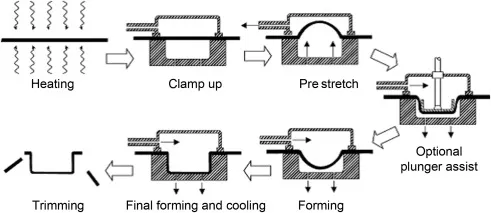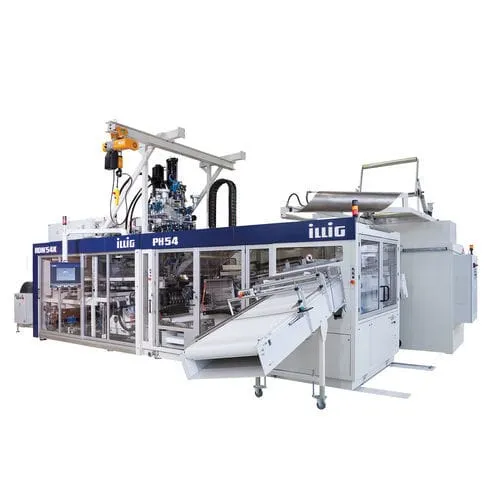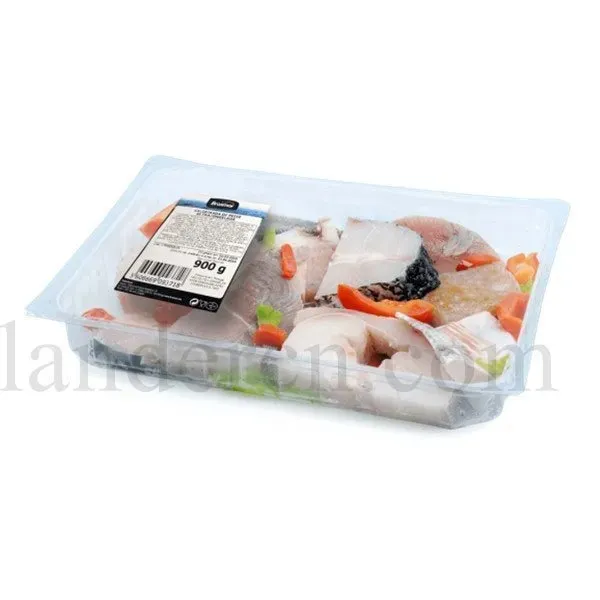Thermoforming Machines for Food Packaging: A Comprehensive Guide
In the dynamic world of food production, packaging plays a critical role in ensuring product safety, extending shelf life, and attracting consumers. Among the most versatile and widely used technologies in this domain is thermoforming. Thermoforming machines for food packaging are the workhorses behind a vast array of products found in supermarkets, from yogurt cups and ready-meal trays to blister packs for meats and cheeses. This article delves into the intricacies of these machines, exploring how they work, their benefits, and the future of thermoformed packaging.
What is Thermoforming and How Does It Work?
Thermoforming is a manufacturing process where a plastic sheet is heated to a pliable forming temperature, formed to a specific shape in a mold, and trimmed to create a usable product. In the context of food packaging, this process is highly automated and occurs at high speeds. The basic principle can be broken down into a few key stages:
The Thermoforming Process Cycle
A standard thermoforming machine operates in a continuous cycle, which includes the following steps:
- Sheet Feeding: A roll of plastic film, known as the web, is fed into the machine.
- Heating: The plastic sheet passes through an oven section where heating elements (ceramic, quartz, or infrared) soften it to a precise temperature, making it malleable.
- Forming: The heated sheet is then indexed into the forming station. Here, a mold (or tool) defines the final shape of the package. Pressure or vacuum is applied. In vacuum forming, air is sucked out from between the mold and the sheet, pulling the plastic into the mold's cavities. Pressure forming uses additional air pressure from above the sheet to force it into the mold, allowing for more detailed and sharper features.
- Cooling: The newly formed plastic packages are cooled rapidly, often with fans or water-cooled molds, to solidify their shape.
- Trimming: The formed sheet, now containing multiple packages, moves to a trimming station where a die cutter punches out the individual packages from the surrounding waste web, which is then wound up for recycling.

Figure 1: The fundamental stages of the thermoforming process for food packaging.
Key Components of a Thermoforming Machine
Understanding the machine itself is crucial. A typical thermoforming system comprises several integrated components:
- Unwind Station: Holds the large roll of plastic film and feeds it into the machine.
- Heating Oven: Equipped with multiple heating zones to ensure even and controlled heating across the entire width of the plastic web.
- Forming Press: The core of the machine, containing the mold (platen) and the mechanism for applying vacuum or pressure.
- Mold (Tooling): Typically made from aluminum, these are precision-engineered to create the desired package shape. They include tiny holes for vacuum application and channels for cooling.
- Trimming Press: Uses a custom-designed steel rule die to separate the finished packages from the waste material.
- Control System: A sophisticated PLC (Programmable Logic Controller) that automates the entire process, managing temperature, timing, and press movements for consistent quality.
Types of Thermoforming Machines for Food Packaging
Thermoforming machines are categorized based on their material handling method and the type of packaging they produce.
| Machine Type | Description | Common Applications |
|---|---|---|
| In-Line Thermoformers | These machines are integrated with filling and sealing equipment in a continuous production line. The plastic is formed, filled with food, and lidded with a top web (foil or film) all in one seamless operation. | Dairy products (yogurt, pudding), ready meals, processed meats. |
| Roll-Fed Thermoformers | Use a continuous roll of plastic film. They are designed for high-volume production of shallow-depth packages at very high speeds. | Blister packs, clamshells, egg cartons, single-serve containers. |
| Sheet-Fed Thermoformers | Use pre-cut sheets of plastic instead of a continuous roll. This method is better suited for lower-volume production, prototyping, and forming thicker, deeper-draw parts. | Large food trays, thick-walled containers, premium packaging. |

Figure 2: A high-speed in-line thermoforming, filling, and sealing machine used for dairy products.
Benefits of Using Thermoforming for Food Packaging
The popularity of thermoforming is driven by several significant advantages it offers to food manufacturers and consumers alike.
Design Flexibility and Customization
Thermoforming allows for a tremendous degree of design freedom. Packages can be created in virtually any shape, size, or depth, with options for multiple cavities, compartments, and intricate details. This enables brand differentiation and functional designs, such as compartments to separate sauces from main courses.
Cost-Effectiveness and High Efficiency
Once the initial mold is created, the per-unit cost of thermoformed packages is very low, especially for high-volume runs. Modern machines operate at impressive speeds, producing thousands of units per hour, which translates to high throughput and reduced labor costs.
Superior Product Protection and Shelf Life
Thermoformed packages can be seamlessly integrated with modified atmosphere packaging (MAP) technology. After filling, the air inside the package is replaced with a protective gas mixture (e.g., nitrogen and carbon dioxide) before sealing. This significantly slows down spoilage, extending the shelf life of fresh foods like meat, poultry, and cheese.
Material Versatility and Sustainability
A wide range of FDA-approved plastic materials can be used, including PET, PP, PS, APET, and PVC. Furthermore, the process is inherently efficient with material. The unused web (skeleton) generated during trimming can be immediately granulated and recycled, often being reintroduced into the production of new sheets, minimizing waste.

Figure 3: A thermoformed package using MAP technology to preserve the freshness of meat products.
Common Materials Used in Thermoformed Food Packaging
The choice of material depends on the food product's requirements, such as barrier properties, clarity, rigidity, and compatibility with hot-fill or microwave processes.
- PET (Polyethylene Terephthalate): Excellent clarity, strong barrier to gases and moisture, widely recyclable. Used for ready-meal trays and beverage cups.
- PP (Polypropylene): Good chemical resistance, high melting point (microwaveable), and flexible. Common for yogurt cups and syrup bottles.
- PS (Polystyrene): Rigid and cost-effective. Used for disposable cutlery, lids, and egg cartons. High-Impact PS (HIPS) is used for dairy containers.
- APET (Amorphous Polyethylene Terephthalate): A form of PET known for its glass-like clarity and toughness, used for clamshells and transparent trays.
The Future of Thermoforming in Food Packaging
The industry is continuously evolving, with trends focusing on sustainability and smart technology. There is a growing shift towards using recycled content (rPET, rPP) and developing mono-material structures that are easier to recycle. Bioplastics derived from renewable sources are also gaining traction. Additionally, integration with Industry 4.0 principles allows for predictive maintenance, real-time quality monitoring, and enhanced traceability throughout the packaging process.
Conclusion
Thermoforming machines are a cornerstone of modern food packaging. Their ability to produce highly customized, protective, and cost-effective packages at remarkable speeds makes them indispensable. As technology advances and the demand for sustainable solutions grows, thermoforming will continue to adapt, ensuring its place as a leading packaging technology for years to come.

